Celebrating the NIH Campus's 80th Birthday
Photos Show Evolution of Pre-Eminent Research Institution
In just one lifetime, the NIH's main campus in Bethesda, Maryland, went from country estate to one of the premiere biomedical research campuses in the world. October 31, 2020, marked the 80th anniversary of the dedication of the NIH campus by President Franklin D. Roosevelt, who said, “Today the need for the conservation of health and physical fitness is greater than at any time in the Nation's history. In dedicating this institute, I dedicate it to the underlying philosophy of public health, to the conservation of life, to the wise use of the vital resources of our Nation. I voice for America, and for the stricken world, our hopes, our prayers, our faith, in the power of man's humanity to man.”
In honor of that historic milestone, I have gathered a collection of old photos and fun facts to provide a taste of how NIH's Bethesda campus has changed over the past 80 years. Who knows how this cutting-edge biomedical research institution might change over the next eight decades?
It’s hard to believe that in just one lifetime — 80 years — the country setting below became the bustling campus of the NIH. This field was part of the Tree Tops estate that Luke and Helen Wilson donated to the federal government. “There are only three reasons anyone would want to own an estate: You can raise chickens, raise children, or raise hell. I think we’re a little too close to the highway for any of these, and thus I decided to give the land to the government for NIH," Helen Wilson is supposed to have explained to a roomful of her friends and neighbors.
After Luke Wilson died of bladder cancer a few days before Congress unanimously authorized the National Cancer Institute in 1937, Helen donated additional acres to house that new institute too. Eventually, the Wilson family would donate “70 Acres of Science” in total.
(Quote from “Slice of 1930s Saved: Last of ‘Treetops,’[sic] Bldg. 15K is Refurbished,” by Carla Garnett, NIH Record, May 29, 2001, page 1)

Looking somewhat like a dollhouse, the wood framework for NIH’s Building 1 was completed in July 1938 (center). Building 3 is much further along in this photo, having its roof installed (right), but Building 2's framework is just beginning (left). If you look closely, you can see the workers, who in only three years would build the first six buildings of the NIH campus.

In this next photo, a supervisor chats with men working on a house for Public Health Service officers stationed at the NIH's main campus in September 1939. The officers paid rent but got houses with electricity, running water, and furnaces — something many Americans did not have at the time. Now, 80 years after the campus was dedicated, the sounds of children playing in the yards have been replaced by the sounds of office workers in the houses.
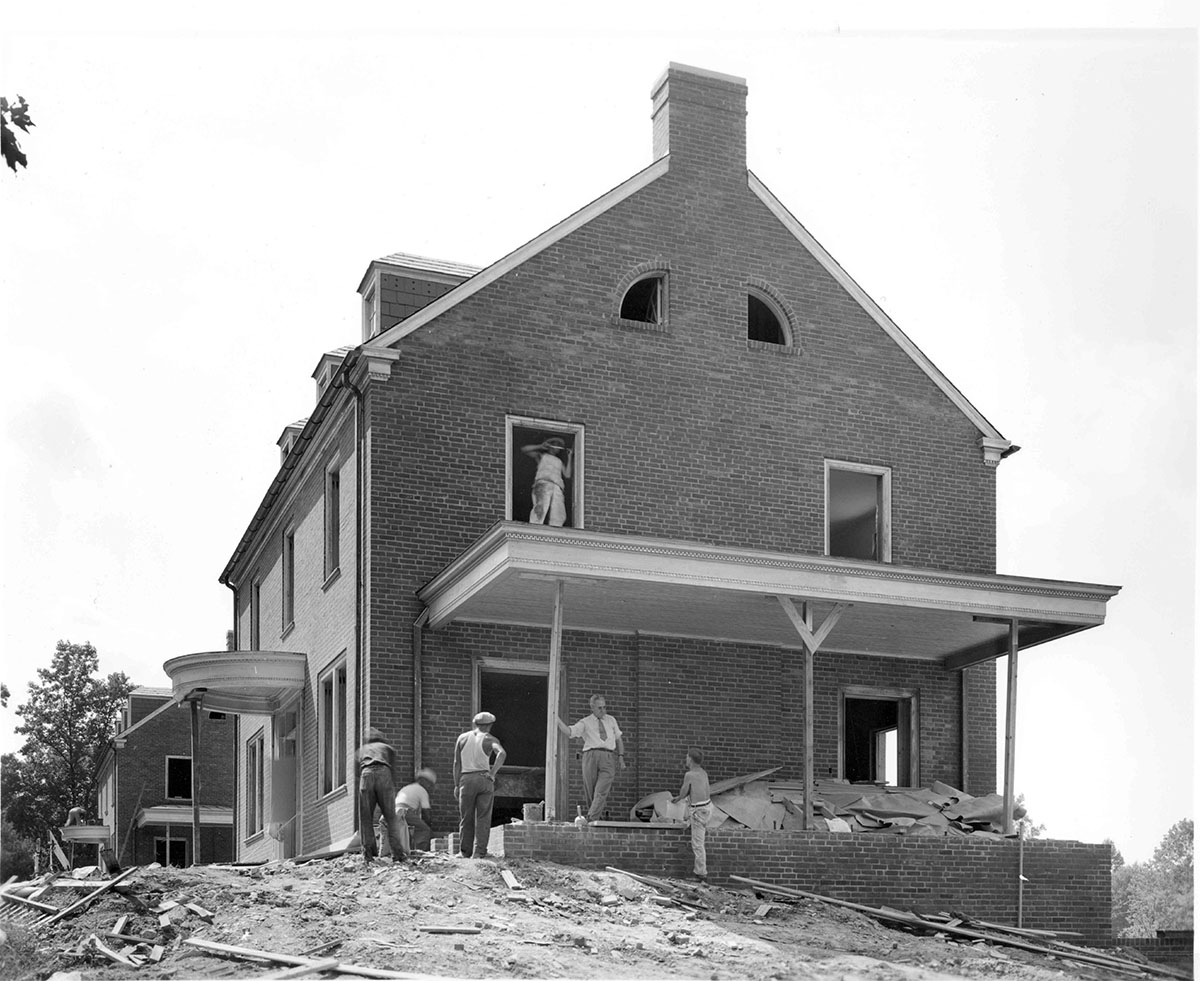
On a January day in 1939, workers prepared to construct the first floor of Building 6, which would house the National Cancer Institute on the NIH campus. NIH scientists wouldn’t wait for the building to be completely finished before they moved in, which greatly annoyed the construction workers. When President Franklin D. Roosevelt dedicated the campus on October 31, 1940, some NIH staff had been working on campus for nearly two years.
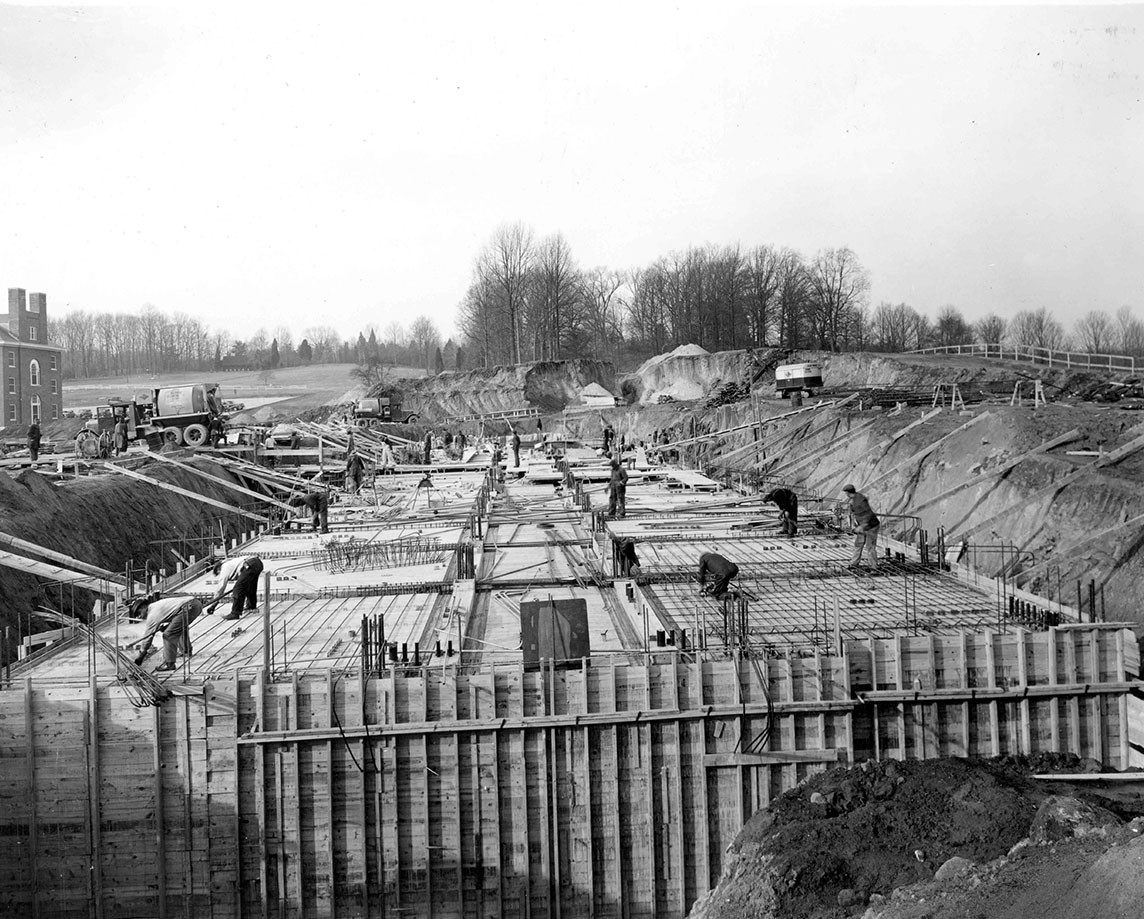
Here's an aerial view of the NIH's Bethesda campus 80 years ago after the completion of its first six buildings, which tripled the space available to the NIH’s laboratory and administrative staffs and had ventilation systems for chemical hoods and animal rooms. The campus also had its own power plant and sewage pumping system with considerably more steam supply, electrical capacity, and refrigeration available than at its old home in Washington, D.C. Dozens of buildings have been constructed on campus since then, and nowadays many people need a map to get around.

A scientist would have swooned for this laboratory 80 years ago. This Building 2 lab on the NIH campus had everything: tiled walls, two fume hoods, a refrigerator, electrical panels in the wall, gas and water dispensers, and even window shades designed not to react with chemicals.
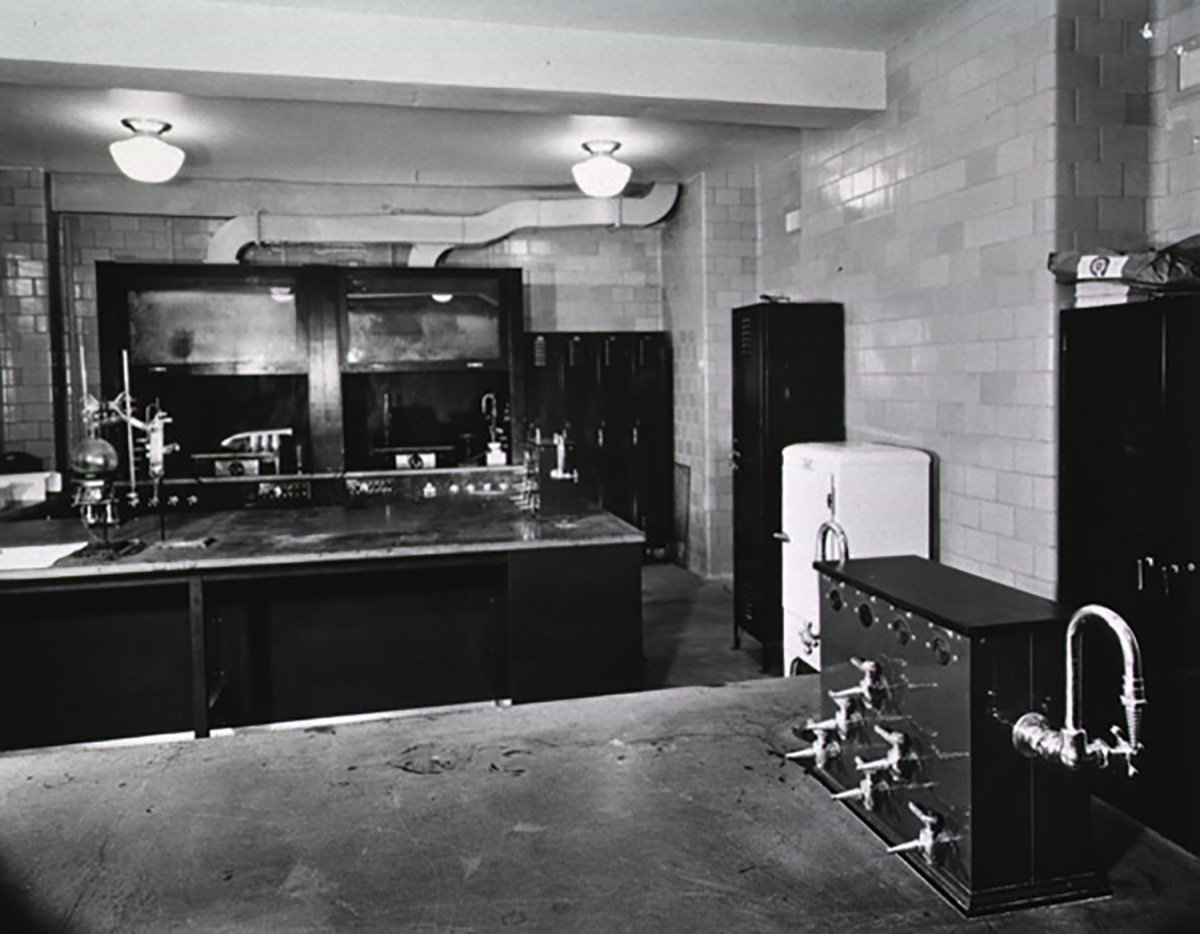
Visitors and NIH staff hurried to find a good spot in front of the patriotically decorated Building 1 on October 31, 1940. They hoped to listen to President Franklin D. Roosevelt dedicate the new NIH campus. Building 1 is still the administrative center of the NIH 80 years later. Note the press box on stilts to the left, which gave cameras a good view of the president as he spoke from the top of the stairs.
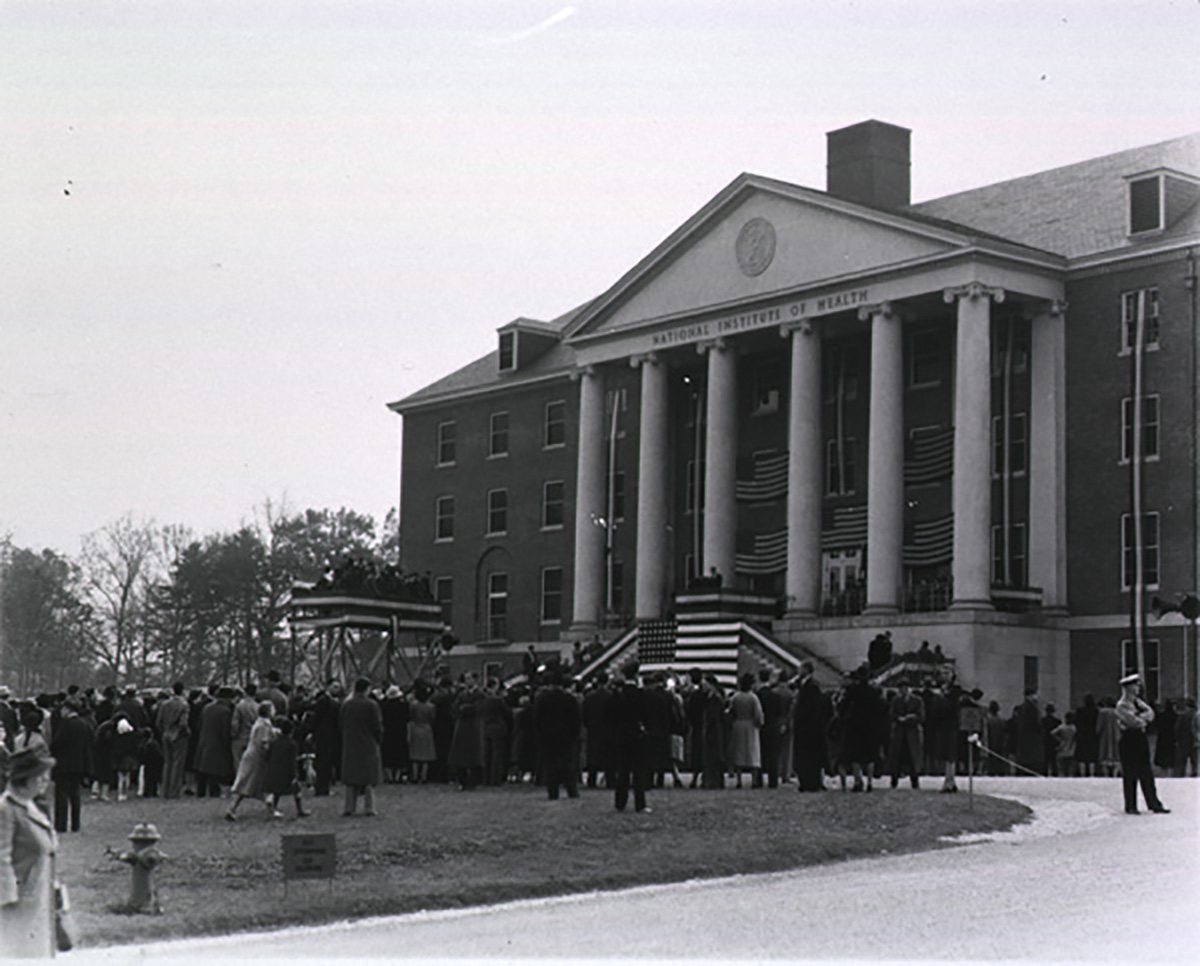
“We cannot be a strong Nation unless we are a healthy Nation. And so we must recruit not only men and materials but also knowledge and science in the service of national strength,” President Roosevelt told the audience at the dedication ceremony.
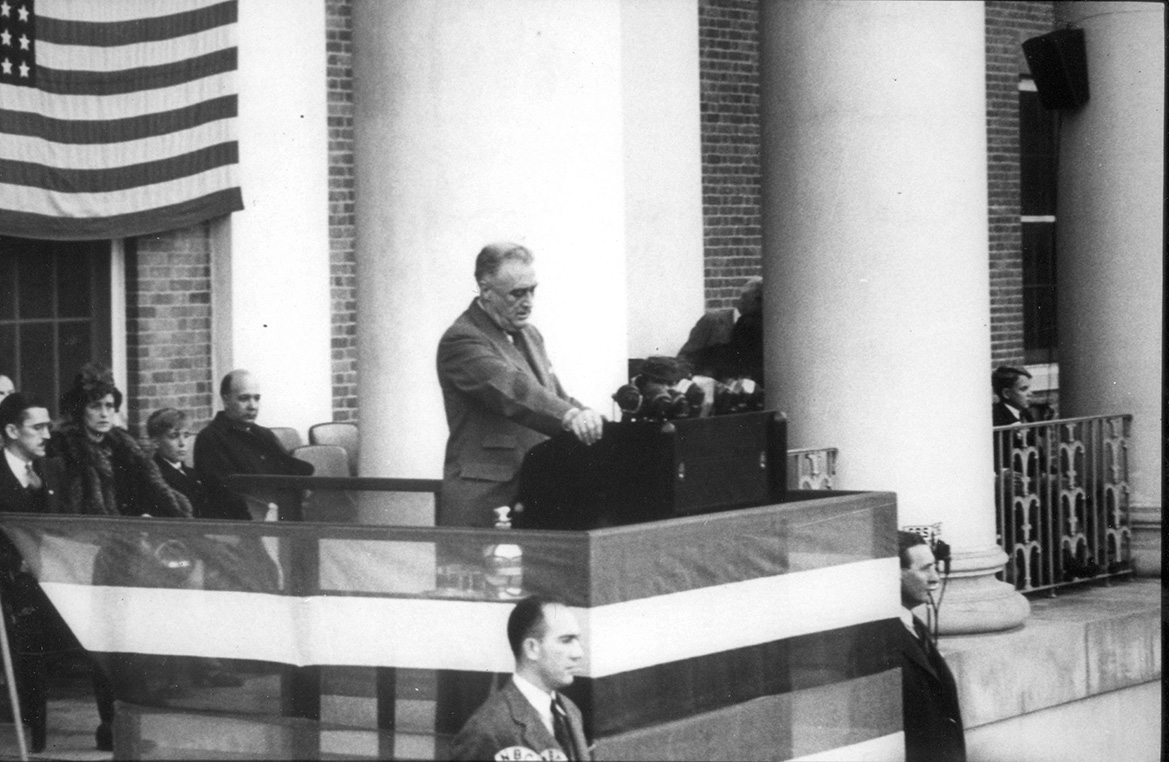
Subscribe to the NIH IRP's weekly newsletter to stay up-to-date on the latest breakthroughs in the NIH Intramural Research Program.
Related Blog Posts
This page was last updated on Wednesday, July 5, 2023
